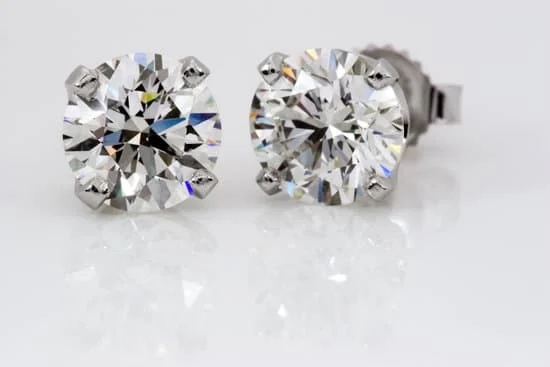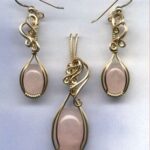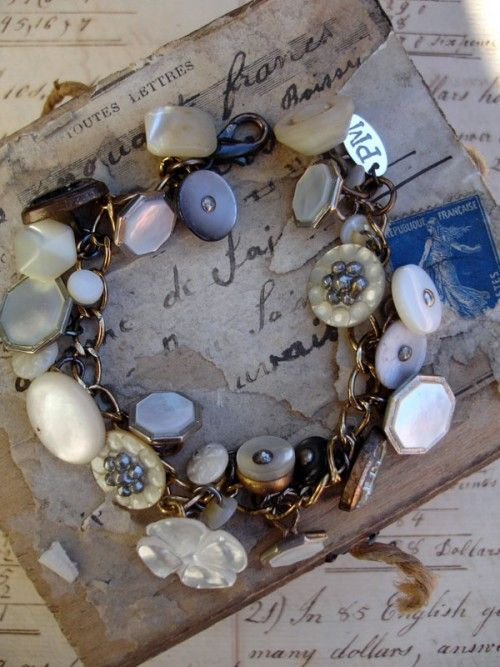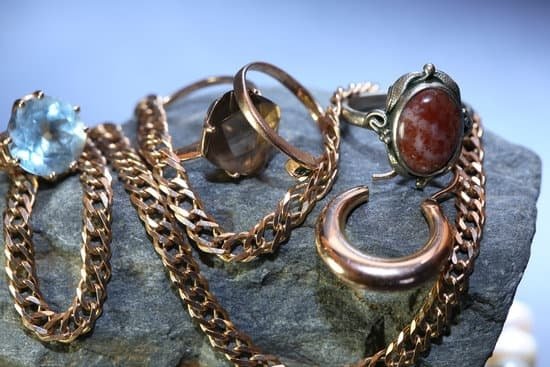Using an ultrasonic jewelry cleaner can be a game-changer when it comes to restoring the luster and sparkle of your precious pieces. With its powerful cleaning abilities, it can breathe new life into even the dullest of jewels.
However, it’s crucial to understand that not everything can safely go into an ultrasonic cleaner. In this article, we will delve into the dos and don’ts of using an ultrasonic jewelry cleaner, ensuring that you avoid any potential mishaps and prolong the lifespan of your beloved gems.
Proper usage of an ultrasonic jewelry cleaner is essential in maintaining the longevity of your jewelry collection. When used correctly, these devices use innovative technology that harnesses the power of sound waves to clean deep into crevices, eliminating dirt and grime that manual methods cannot reach. However, not all materials or gemstones are suitable for this type of cleaning process.
In the following sections, we will explore what should and shouldn’t go into an ultrasonic jewelry cleaner. We will discuss the types of jewelry items that are safe to clean using this method, such as gold, silver, diamonds, and gemstones.
Additionally, we will highlight common materials and jewelry pieces that should never be subjected to the intense cleaning power of an ultrasonic cleaner. By understanding these guidelines, you can protect your treasures from potential damage while achieving optimal results in cleanliness and brilliance.
Understanding the Power of Ultrasonic Jewelry Cleaners
Ultrasonic jewelry cleaners may seem like magic devices that effortlessly remove dirt and grime from your precious jewelry, but their cleaning power is actually rooted in science. Understanding how these devices work can help you use them effectively and safely.
The Science Behind Ultrasonic Jewelry Cleaners
Ultrasonic jewelry cleaners work based on the principle of ultrasonic cavitation. The device emits high-frequency sound waves, usually between 20,000 and 40,000 vibrations per second, creating microscopic bubbles in a cleaning solution. These bubbles implode near the surface of the jewelry item, creating tiny shockwaves that dislodge dirt particles.
The Benefits of Ultrasonic Cleaning
The use of ultrasonic technology offers several advantages over traditional cleaning methods. Firstly, it provides a deep clean by reaching into small crevices and hard-to-reach areas that could be missed with manual cleaning. Secondly, ultrasonic cleaning is fast and efficient, reducing the amount of time and effort required to clean each piece of jewelry. Finally, it can be gentle on delicate or intricate pieces if used correctly.
Important Factors to Consider
While ultrasonic cleaners are highly effective at removing dirt and grime from many types of jewelry, it is crucial to consider a few factors before using them. It is essential to make sure that your jewelry item is suitable for ultrasonic cleaning by checking its resistance to heat, chemicals, and pressure. Delicate materials such as emeralds or opals may require alternative cleaning methods due to their sensitivity.
Overall, understanding the power and mechanism behind an ultrasonic jewelry cleaner allows you to make informed decisions about what items can safely undergo this type of cleaning process. By being knowledgeable about which types of jewelry can benefit from ultrasonic cleaning and which cannot, you can ensure that your precious pieces remain beautiful for years to come while avoiding potential damages or mishaps that may occur with improper usage.
The Ultimate Cleaning Guide
Ultrasonic jewelry cleaners are a powerful tool for keeping your precious jewelry looking its best. These devices utilize revolutionary technology that harnesses sound waves to clean deep into the crevices of your jewelry, removing dirt and grime. However, it is crucial to know what items are safe to clean in an ultrasonic cleaner to avoid any damage or mishaps.
The good news is that most types of jewelry can safely be cleaned using an ultrasonic cleaner. Gold, silver, diamonds, and gemstones like rubies, sapphires, and emeralds are all suitable for ultrasonic cleaning. The high-frequency vibrations produced by the machine are effective at dislodging dirt particles even from hard-to-reach areas of your jewelry.
When cleaning gold jewelry, it is important to ensure that any gemstones or diamonds set in the piece are secure. Loose stones may come out during the cleaning process due to the vibrations. Therefore, it is recommended to regularly check and tighten any settings before placing them in the ultrasonic cleaner.
Furthermore, silver jewelry can also be cleaned using an ultrasonic cleaner. The gentle but thorough cleaning action removes tarnish and restores the shine of your silver pieces effectively. Just like with gold pieces, it is essential to ensure that any gemstones or delicate components on your silver jewelry are securely mounted before subjecting them to ultrasonic cleaning.
What NOT to Put in Ultrasonic Jewelry Cleaners
Porous Gemstones
One of the biggest mistakes you can make when using an ultrasonic jewelry cleaner is putting porous gemstones into it. Gemstones such as opals, emeralds, pearls, turquoise, and amber have a porous nature that makes them vulnerable to damage from the intense vibrations produced by ultrasonic cleaners. The powerful waves can cause these gemstones to crack or even dissolve completely. It’s best to avoid subjecting any porous gemstone jewelry to ultrasonic cleaning altogether.
Precious Metals with Patinas
If you own jewelry pieces that have intentional patinas or oxidized finishes, it’s important to keep them away from ultrasonic cleaners. The strong vibrations and cleaning solution used in ultrasonic cleaners can strip away the patina on metals like sterling silver or brass, leaving your jewelry looking dull and lifeless. To maintain the unique look of these pieces, it’s recommended to use alternative cleaning methods like gentle polishing cloths or specialized tarnish removers.
Costume Jewelry
While costume jewelry can be beautiful and fun to wear, it should never be cleaned in an ultrasonic jewelry cleaner. Most costume jewelry consists of low-quality materials like base metals and non-precious gemstones that are simply glued together.
The intense vibrations and submersion in water can cause the glue to weaken or dissolve entirely, leading to dislodged stones or loose components. To clean your costume jewelry safely, it’s best to opt for gentle scrubbing with a soft cloth and mild soapy water.
Watches with Leather Straps
Leather straps are highly susceptible to damage caused by water exposure and excessive vibrations. Ultrasonic cleaning could lead to warping, discoloration, or even complete disintegration of the leather strap on your watch. Instead of subjecting your watch with a leather strap under the ultrasonic cleaner, it’s recommended to wipe the strap with a damp cloth or use a specialized leather cleaning product.
By being aware of what not to put in an ultrasonic jewelry cleaner, you can avoid catastrophic mishaps and preserve the beauty and integrity of your precious jewelry items. Taking the time to understand the limitations and suitable cleaning methods for specific types of jewelry will ensure that your treasured pieces remain in excellent condition for years to come.
Delicate Beauties
When it comes to cleaning delicate jewelry pieces, such as antique or handcrafted items, extra caution and alternative cleaning methods are necessary. These fragile beauties often have intricate designs, are made from delicate materials, or hold sentimental value that requires special care. While ultrasonic jewelry cleaners are highly effective for many types of jewelry, they may not be suitable for these delicate pieces due to their sensitivity to the powerful waves generated by the cleaner.
One category of delicate jewelry that should be treated with special care are antique pieces. These heirloom treasures often have intricate details and unique characteristics that make them truly one-of-a-kind. To clean such jewelry without the use of an ultrasonic cleaner, a gentle approach is recommended.
A soft brush with natural bristles can be used to remove dirt and grime from crevices and intricate designs. Mild soaps specifically formulated for delicate jewelry can also be used in conjunction with warm water to clean these precious items.
Handcrafted jewelry is another type of delicate piece that requires alternative cleaning methods. This type of jewelry is typically made with a lot of love and dedication, often using unconventional materials or techniques.
The fragility of handcrafted jewelry makes it susceptible to damage when subjected to the powerful waves generated by an ultrasonic cleaner. To keep these unique pieces in pristine condition, it is advised to clean them by soaking in a solution made from mild soap and warm water before gently wiping them dry with a soft cloth.
In addition to antique and handcrafted jewelry, there are other types of delicate pieces that should not be cleaned using an ultrasonic cleaner. These include items with glued settings or stones, as the vibrations produced by the cleaner can potentially loosen or damage these components. Additionally, any piece with organic material such as wood or leather should also be kept away from ultrasonic cleaners as they may deteriorate when exposed to water and vibrations.
When it comes to cleaning delicate jewelry, it is crucial to understand the limitations of ultrasonic cleaners and opt for alternative cleaning methods. By taking the time to properly care for and clean these fragile pieces, you can ensure their longevity and preserve their beauty for years to come.
Understanding the Limitations
When using an ultrasonic jewelry cleaner, it’s important to understand its limitations in order to prevent any potential damage to your precious pieces. Ultrasonic cleaners use high-frequency sound waves to create tiny bubbles that implode on the surface of your jewelry, effectively removing dirt and grime from even the tiniest crevices. However, there are certain factors that can impact the effectiveness and safety of this cleaning method.
- Size: The size of your jewelry can significantly affect the results you get from an ultrasonic cleaner. Large or bulky pieces may not fit properly in the cleaning basket or tank, which can lead to uneven cleaning or even damage if forced into a confined space. It’s important to check the dimensions of your jewelry cleaner and compare them against the size of your items before attempting to clean them.
- Structure: Complex or intricate designs in jewelry can also pose challenges when using an ultrasonic cleaner. The vibrations generated by the cleaner can potentially loosen stones or damage delicate settings. For jewelry with intricate details, consider alternative cleaning methods such as using a soft brush and mild soap solution to gently clean its surface.
- Damage Risks: While ultrasonic cleaners are generally safe for many types of jewelry materials, certain gemstones and settings may be more susceptible to damage. For example, softer gemstones like opal or turquoise should never be cleaned with an ultrasonic cleaner as it can cause cracks or discoloration. Additionally, antique or older pieces with fragile settings might not withstand the intense vibrations produced by these cleaners.
To ensure the safety of your jewelry while using an ultrasonic cleaner, it is always recommended to consult with a professional jeweler before attempting to clean any valuable or delicate pieces. They will be able to provide guidance on whether ultrasonic cleaning is suitable for your specific item and advise on alternative methods if needed.
By understanding these limitations and taking necessary precautions, you can safely and effectively clean your jewelry using an ultrasonic cleaner while minimizing the risk of damage.
Alternatives to Ultrasonic Cleaning
Ultrasonic jewelry cleaners are undoubtedly powerful tools for deep cleaning your precious jewelry. However, there are certain instances when using an ultrasonic cleaner may not be the best option. In such cases, it is important to know the alternatives to ultrasonic cleaning that can help you maintain your jewelry in peak condition.
One alternative method for cleaning your jewelry is by using mild soaps and warm water. This method is particularly suitable for pieces that contain delicate gemstones, pearls, or other materials that may be damaged by the intense vibrations of an ultrasonic cleaner. To clean your jewelry using this method, simply mix a few drops of mild dish soap with warm water in a bowl.
Gently soak your jewelry in the solution for a few minutes and then use a soft-bristled brush to scrub away any dirt or grime. Rinse the jewelry thoroughly with clean water and pat dry with a soft cloth.
Another alternative to ultrasonic cleaning is using specialty cleaning solutions designed specifically for different types of jewelry. These solutions are available in the market and can effectively remove tarnish, grime, and fingerprints from your precious items without causing any harm. It is important to read the instructions carefully before using any specialty cleaning solution and follow them accordingly.
For antique or handcrafted jewelry pieces that require extra care due to their delicate nature, it is advisable to seek professional assistance. Jewelry experts have the knowledge and expertise to handle these unique pieces properly while ensuring their preservation. Professional jewelers use specialized techniques and equipment to clean delicate jewelry without causing any damage.
Using alternative methods for cleaning your jewelry ensures that you maintain its shine and brilliance while avoiding potential risks associated with ultrasonic cleaning. Whether it’s using mild soaps, specialty solutions, or seeking professional help, these alternatives allow you to keep your precious items in peak condition for years to come.
| Alternative Cleaning Method | Description |
|---|---|
| Mild soaps and warm water | A gentle method suitable for delicate gemstones, pearls, and other materials that may be damaged by ultrasonic cleaning. Mix mild dish soap with warm water, soak jewelry, scrub gently with a soft-bristled brush, rinse thoroughly. |
| Specialty cleaning solutions | Specifically designed solutions for different types of jewelry. They effectively remove tarnish, grime, and fingerprints without causing harm. Read instructions carefully before using. |
| Professional assistance | Seek help from jewelry experts for antique or handcrafted pieces that require extra care. Professionals use specialized techniques and equipment to clean delicate jewelry without damage. |
Proper Care and Maintenance
When it comes to extending the lifespan of your precious jewelry, proper care and maintenance are of utmost importance. While using an ultrasonic jewelry cleaner can be an effective method for keeping your jewelry sparkling, it is crucial to supplement this cleaning method with other maintenance practices. By following these tips and techniques, you can ensure that your jewelry remains in peak condition for years to come.
- Regular Inspections: One simple yet crucial step in caring for your jewelry is conducting regular inspections. This allows you to identify any potential issues early on and take necessary actions to prevent further damage. During inspections, check for loose settings or stones, signs of wear or damage, and any build-up of dirt or debris on the surface.
- Professional Cleanings: In addition to regular inspections, periodic professional cleanings are essential for maintaining the brilliance of your jewelry. Professionals have the expertise and specialized tools to clean your jewelry thoroughly without causing any harm. They can also identify underlying problems that may not be apparent during self-inspections.
- Safe Storage Practices: Proper storage is key to protecting your jewelry from scratches, tangling, or other potential damage. Consider storing each piece separately in a soft cloth pouch or a lined jewellery box to minimize contact with other items. Avoid exposing your jewellery to direct sunlight or extreme temperatures as this can cause fading or damage over time.
By incorporating these care and maintenance practices into your routine, you can maximize the lifespan of your treasured jewelry pieces and enjoy their beauty for many years. Remember that while ultrasonic cleaners offer convenience in cleaning, they should not be solely relied upon for all types of jewelry maintenance needs.
| Tips for Care and Maintenance |
|---|
| Regular Inspections |
| Professional Cleanings |
| Safe Storage Practices |
Conclusion
In conclusion, utilizing an ultrasonic jewelry cleaner can be an effective and efficient way to maintain the brilliance of your precious jewelry. However, it is important to understand the dos and don’ts of using this powerful cleaning tool. By following the guidelines outlined in this article, you can master the art of ultrasonic jewelry cleaner usage and ensure that your jewelry remains in peak condition for years to come.
One of the key takeaways from this article is the importance of knowing what not to put in an ultrasonic jewelry cleaner. Certain materials, such as porous gemstones, pearls, and costume jewelry, should be avoided as they can be easily damaged by the intense vibrations generated by these cleaners. It is crucial to always carefully inspect each piece of jewelry before subjecting it to ultrasonic cleaning to prevent any catastrophic mishaps.
Furthermore, delicate jewelry items require special care due to their sensitivity to ultrasonic waves. Antique or handcrafted pieces may have intricate designs or fragile settings that can be loosened or damaged when subjected to the power of an ultrasonic cleaner. In such cases, alternative cleaning methods should be used to ensure the preservation of these delicate beauties.
It is also important to recognize the limitations of ultrasonic jewelry cleaners, particularly in terms of size and structure. Large or bulky pieces may not fit comfortably into a standard-sized cleaner, while intricate designs with hidden crevices may pose a risk of loosening or damaging stones or settings. In such instances, it is best to explore alternative cleaning methods that are more suitable for these types of jewelry.
Finally, proper care and maintenance are essential for maximizing the lifespan of your jewelry. Regular inspections, professional cleanings, and safe storage practices all play a vital role in preserving the brilliance and longevity of your precious pieces. While an ultrasonic cleaner can be a valuable tool in your cleaning arsenal, there are times when other methods should be employed instead.
By being fully informed about what to clean, what not to clean, and alternative cleaning methods, you can confidently navigate the use of an ultrasonic jewelry cleaner. With proper usage and care, this powerful tool can help extend the life of your precious jewelry and keep it looking its best for years to come.
Frequently Asked Questions
Can I use Dawn in my ultrasonic jewelry cleaner?
It is generally not recommended to use Dawn or any other dishwashing soap in an ultrasonic jewelry cleaner. While Dawn is a gentle and effective cleaner for many items, it can cause damage to certain types of gemstones or metals when used in ultrasonic cleaning.
The high-frequency vibrations produced by the cleaner can intensify the cleaning power of the detergent, potentially harming delicate stones or causing discoloration. To avoid any risk, it is best to use a specialized jewelry cleaning solution that is specifically designed for use in ultrasonic cleaners.
Can I use vinegar in my ultrasonic jewelry cleaner?
Although vinegar can be a useful household cleaner, it is not recommended to use it in an ultrasonic jewelry cleaner. Vinegar contains acetic acid, which can potentially damage certain types of gemstones or metals when exposed to the high-frequency vibrations produced by the cleaner.
This acid can cause etching or surface pitting on softer gemstones like pearls or opals, and it may also corrode metals like silver or brass. To ensure the safety of your jewelry, it is advisable to stick with using a specially formulated cleaning solution that is compatible with ultrasonic cleaners.
What can be cleaned in an ultrasonic jewelry cleaner?
A wide range of items can be effectively cleaned in an ultrasonic jewelry cleaner, including various types of jewelry such as rings, earrings, necklaces, bracelets, and watches. The intense vibrations generated by the ultrasonic cleaner are excellent at removing dirt, oil, grime, and other contaminants from jewelry items that are difficult to clean with conventional methods.
Additionally, small metal objects like coins or silverware can also be cleaned using an ultrasonic cleaner. However, it’s important to note that not all materials are suitable for ultrasonic cleaning; delicate gemstones like opals or emeralds may be too sensitive for this type of cleaning and should be cleaned with alternative methods recommended by professionals.

Welcome to my jewelry blog! My name is Sarah and I am the owner of this blog.
I love making jewelry and sharing my creations with others.
So whether you’re someone who loves wearing jewelry yourself or simply enjoys learning about it, be sure to check out my blog for insightful posts on everything related to this exciting topic!





